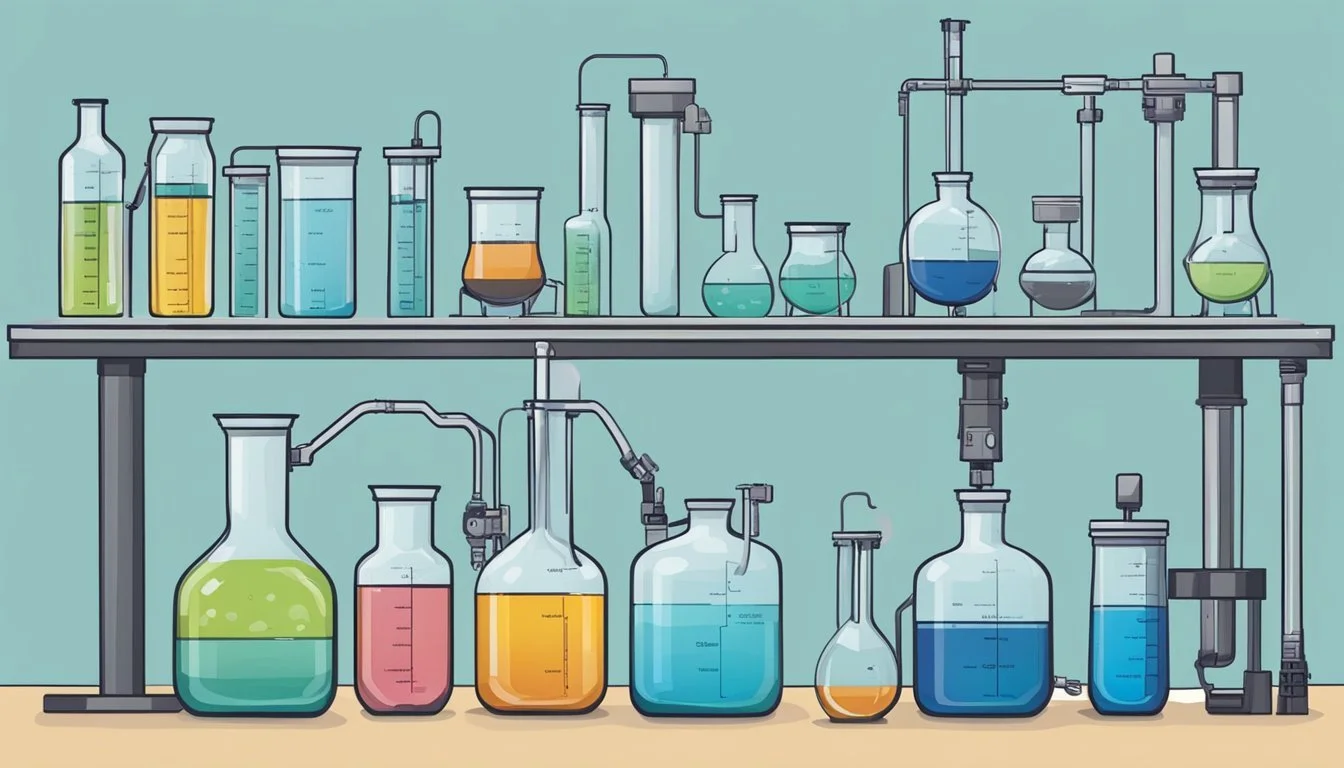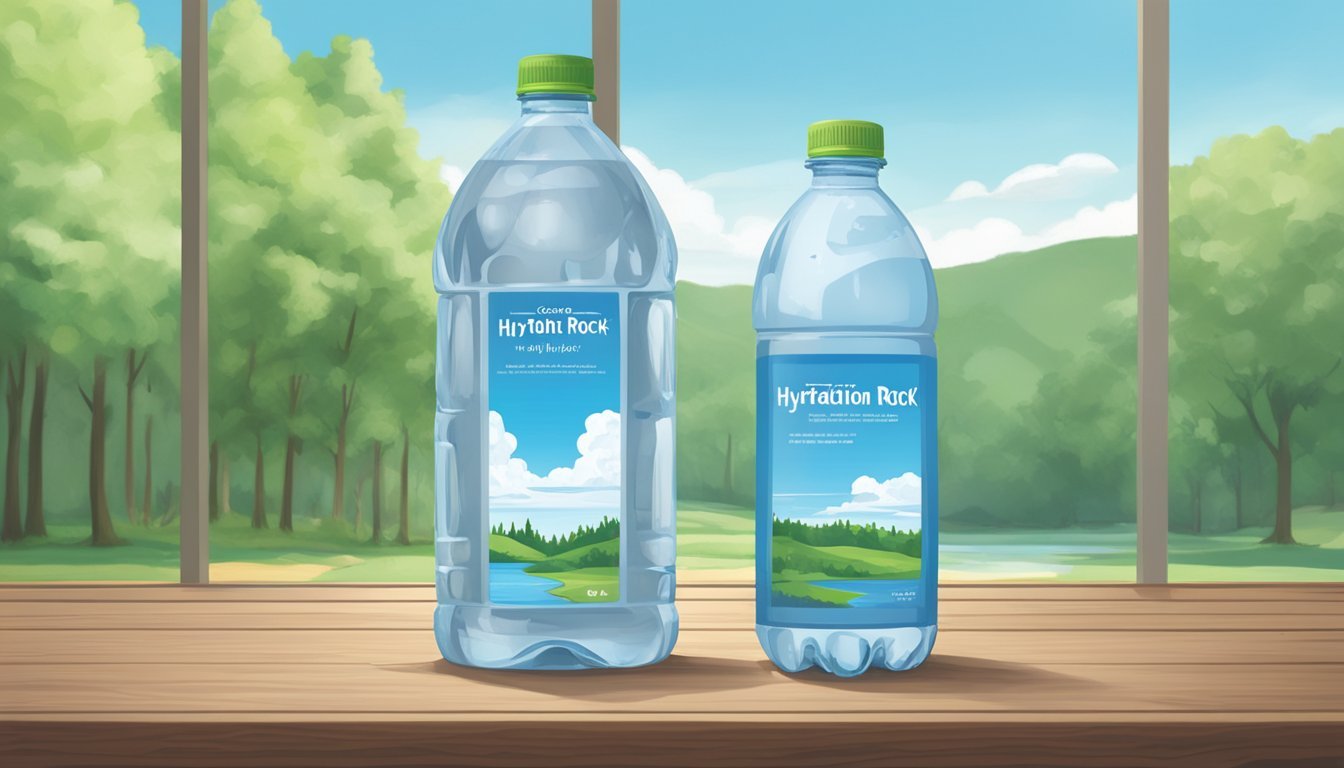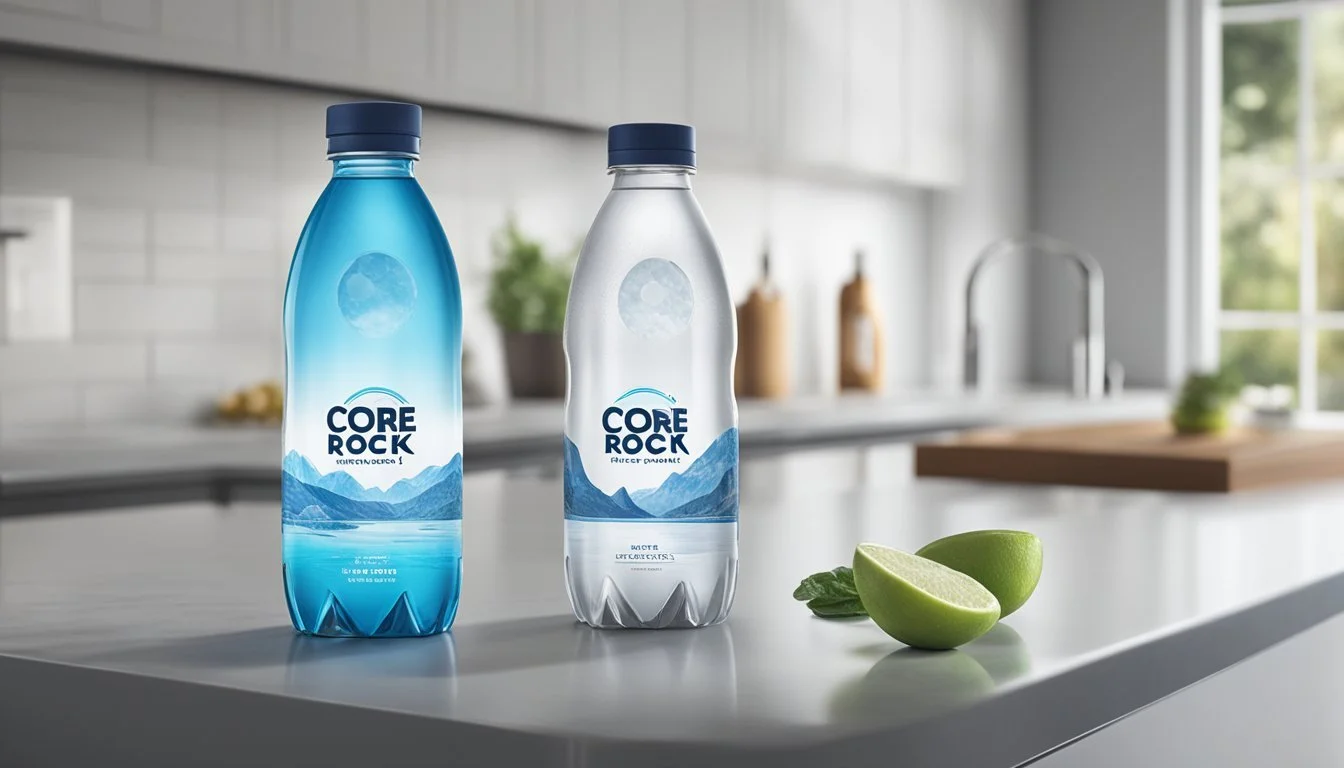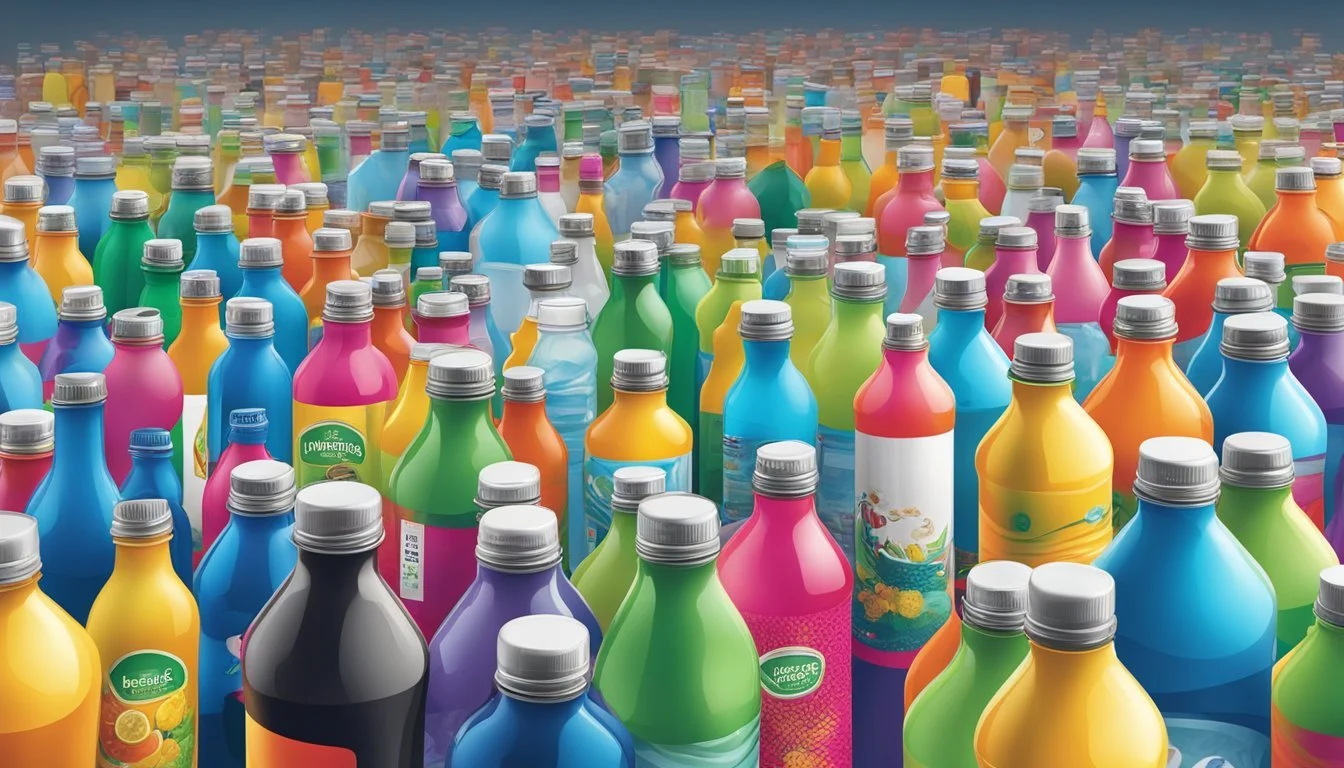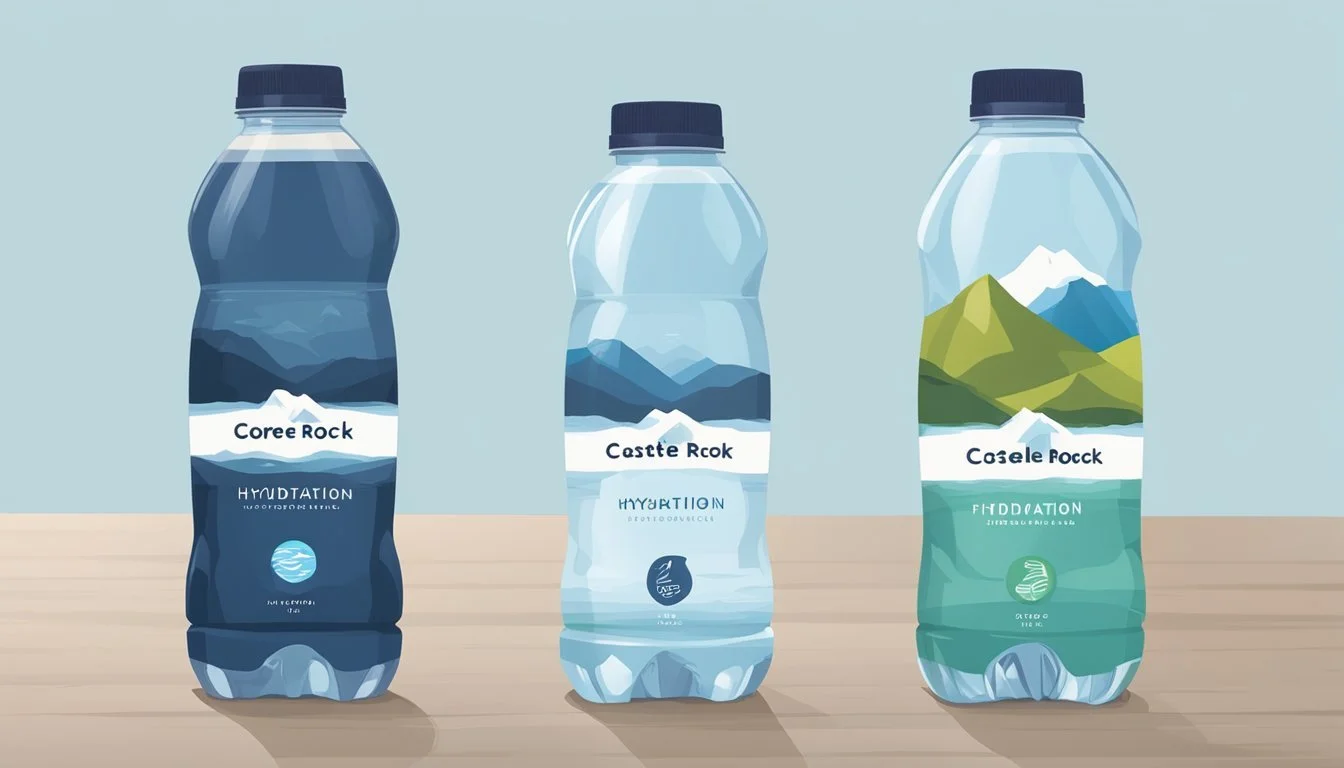Core Hydration vs. Castle Rock
Which Bottled Water is Better?
When it comes to choosing between Core Hydration and Castle Rock bottled water, several factors come into play. Both brands have cultivated a reputation for purity and taste, catering to different preferences in the hydration market.
Castle Rock offers a crisp flavor that evokes the sensation of a refreshing mountain hike. Core Hydration, on the other hand, markets itself as ultra-purified water with balanced electrolytes and a pH matching the human body’s natural state. This unique selling point aims to provide a harmonious drinking experience.
Price-wise, a 30.4 fluid ounce bottle of Core Hydration typically ranges from $2.00 to $3.00 USD, reflecting its premium positioning. For consumers mindful of their budget and seeking natural spring water, Castle Rock remains a noteworthy contender.
Water Brand Overview
Core Hydration and Castle Rock offer unique features that make them stand out in the crowded bottled water market. Core Hydration emphasizes a balanced pH and added electrolytes, while Castle Rock focuses on its natural spring water source and crisp taste.
Understanding Core Hydration
Core Hydration is crafted with a focus on balanced pH and hydration. The brand highlights its seven-stage purification process, which includes reverse osmosis and the addition of electrolytes and minerals.
This process ensures water quality, aiming to replicate the body's natural fluid balance. Core Hydration's product is marketed as being free of impurities, which aligns with consumer preferences for a clean taste.
The brand positions itself as an upscale alternative with pricing reflective of its high processing standards and added benefits. Core Hydration is packaged in sleek, ergonomic bottles, making them convenient for on-the-go hydration.
The Essence of Castle Rock
Castle Rock is known for its pristine natural spring water, sourced directly from the Shasta-Trinity Alps in California. This origin contributes to its crisp, refreshing taste, reminiscent of a morning hike.
The water is bottled at the source, which helps maintain its natural purity and taste. Castle Rock prides itself on environmentally-friendly practices, using sustainable packaging materials.
Consumers appreciate Castle Rock for its commitment to preserving the ecosystem while delivering high-quality spring water. The brand emphasizes natural purity, appealing to those who prefer minimally processed, authentic natural spring water.
Scientific Analysis of Water Quality
Core Hydration and Castle Rock are well-known bottled water brands, each claiming superior water quality through different attributes. This section delves into their pH levels, mineral and electrolyte content, and purification processes to compare their water quality scientifically.
Evaluating pH Levels and Alkalinity
The pH level indicates the acidity or alkalinity of water. Core Hydration boasts a pH of 7.4, which is comparable to the natural pH balance of the human body. This neutral pH is often marketed as ideal for hydration.
Castle Rock offers a naturally alkaline water, ranging from pH 7.5 to 8.5. Alkaline water is often sought for its potential health benefits, such as neutralizing acid in the bloodstream.
Table: pH Levels Comparison
Brand pH Level Core Hydration 7.4 Castle Rock 7.5-8.5
Minerals and Electrolyte Content
Mineral content enhances the flavor and health benefits of water. Core Hydration is infused with electrolytes like potassium, magnesium, and calcium to improve taste and hydration. These minerals are added during the purification process to mimic the composition of natural spring water.
Castle Rock water, sourced from Mount Shasta, is naturally rich in minerals such as calcium, magnesium, and potassium. Its mineral content is not artificially enhanced, appealing to those who prefer water with naturally occurring minerals.
List of Key Minerals:
Core Hydration: Potassium, Magnesium, Calcium
Castle Rock: Calcium, Magnesium, Potassium
Understanding Purification Processes
The purification process ensures the water is safe and clean. Core Hydration undergoes reverse osmosis, removing impurities and contaminants effectively. After this, electrolytes are added back to enhance the water quality.
Castle Rock relies on natural filtration through ancient volcanic rocks. This natural filtration process preserves the water's original mineral content, delivering a product that emphasizes purity and natural properties.
Purification Methods:
Core Hydration: Reverse Osmosis with added electrolytes
Castle Rock: Natural Rocky Filtration
Both methods achieve high purity levels but offer different benefits. Core Hydration is consistent in its added minerals, while Castle Rock provides naturally sourced water with inherent minerals.
Health and Hydration
Proper hydration is crucial for maintaining optimal health. Comparing Core Hydration and Castle Rock bottled waters reveals differences in their health benefits and contributions to hydration.
Role of Water in a Healthy Diet
Water is essential for the proper functioning of the human body. It aids in digestion, nutrient absorption, and the regulation of body temperature. Moreover, hydration impacts mental health, influencing cognitive functions and mood. Both Core Hydration and Castle Rock provide the necessary fluids to support these processes.
Core Hydration claims to have a balanced pH of 7.4, which is said to be in sync with the body's natural pH level. This balance can potentially optimize bodily functions. On the other hand, Castle Rock boasts a natural spring water source, suggesting a pure and refreshing hydration experience.
Nutritional Value and Health Benefits
Core Hydration contains added electrolytes such as potassium bicarbonate, magnesium chloride, and calcium chloride. These electrolytes aid in maintaining fluid balance and muscle function. Castle Rock, being a natural spring water, primarily focuses on its clean and crisp taste without additional minerals.
Both waters are free from artificial flavors and colors, making them a healthy choice. However, Core Hydration’s mineral content might provide an edge in terms of replenishing electrolytes, especially after physical activity. Castle Rock’s natural composition could appeal to those looking for a straightforward, unaltered hydration option.
Ultimately, the choice between Core Hydration and Castle Rock may depend on personal preference and specific hydration needs.
Product Packaging and Environmental Concerns
When choosing bottled water, it's important to consider both packaging materials and the environmental impact of the product. Core Hydration and Castle Rock offer distinct options in these areas.
Bottling Materials and BPA Content
Core Hydration utilizes plastic bottles for its products. These bottles are made from materials that are BPA-free, ensuring that no harmful chemicals leach into the water. The bottles come in a sleek, ergonomic design which makes them easy to handle and carry.
Castle Rock, on the other hand, takes a different approach. They offer water in glass bottles as well as boxed water options. Glass is a safer alternative to plastic as it does not contain BPA and is less likely to leach chemicals. Boxed water is also gaining popularity as a sustainable packaging option. Both packaging types help Castle Rock maintain a cleaner profile.
Environmental Impact and Sustainability
Core Hydration's plastic bottles contribute to the single-use plastic problem, which is a significant environmental concern. While their bottles are recyclable, not all consumers are diligent about recycling, which results in more waste. Additionally, the production of plastic bottles has a considerable carbon footprint.
Castle Rock's use of glass and boxed water packaging demonstrates a stronger commitment to sustainability. Glass bottles are reusable and recyclable, greatly reducing waste. Boxed water often comes in cartons made from renewable resources, which are more environmentally friendly compared to plastic. These efforts align with increased consumer demand for sustainable products.
By offering alternatives to plastic, Castle Rock positions itself as a more environmentally conscious brand, addressing the growing concerns about plastic pollution and its long-lasting impacts on the planet.
Comparative Taste Profile
Core Hydration and Castle Rock offer distinct taste experiences. Comparing their flavor and mouthfeel, as well as consumer perceptions and personal experiences, provides a comprehensive understanding of each brand's appeal.
Flavor and Mouthfeel Differences
Core Hydration is known for its ultra-purified water with a smooth, crisp taste. This brand uses reverse osmosis and electrolytes for added flavor, resulting in a clean and almost neutral taste profile. The mouthfeel is described as lightweight and refreshing.
Castle Rock, sourced from a natural spring in California, provides a more mineral-rich taste. It has a slightly sweet and earthy profile. The water's natural minerals contribute to a more substantial and velvety mouthfeel, setting it apart from Core Hydration's clean simplicity.
Consumer Perceptions and Personal Experience
Many consumers appreciate Core Hydration for its crisp and pure flavor. It is favored by those who prefer subtle, almost flavorless water. Feedback often highlights its refreshing quality during and after exercise.
Castle Rock fans enjoy the mineral-rich, slightly sweet taste, finding it reminiscent of high-quality spring water. Water sommeliers and enthusiasts often praise its natural flavor profile. Personal experiences frequently mention its distinctive mouthfeel, which feels more "alive" compared to processed tap water.
Consumers value their personal experiences and taste preferences, making each water suitable for different occasions and preferences.
Brand Marketing and Consumer Messaging
Core Hydration and Castle Rock prioritize different aspects in their marketing, focusing on consumer lifestyle and health benefits. Their strategies encompass advertising campaigns, celebrity endorsements, and precise labeling claims.
Advertising Strategies
Core Hydration's marketing emphasizes a healthy, active lifestyle. They are associated with sports and fitness, often collaborating with athletes from the NFL and NBA. Advertisements highlight the brand's signature seven-stage purification process and the addition of electrolytes. Core Hydration also leverages social media influencers to connect with health-conscious consumers seeking premium hydration options.
Castle Rock focuses on its natural, eco-friendly image. Their marketing campaigns underline the purity of their spring water and sustainability practices. The brand often uses imagery of pristine natural settings and promotes environmental responsibility. This appeals to consumers who prioritize eco-friendly products.
Labelling Claims and Reality
Core Hydration labels emphasize its optimal pH balance and addition of electrolytes, aiming to enhance taste and hydration benefits. The claims are supported by the detailed seven-stage purification process listed on their bottles, which helps build brand trust among consumers seeking specific health benefits.
Castle Rock's labels highlight its origin from natural springs and the absence of artificial additives. Their packaging is designed to convey a commitment to environmental sustainability, with clear information about their use of recycled materials. This reinforces Castle Rock's reputation as a conscientious choice for eco-aware buyers.
Market Presence and User Base
Core Hydration and Castle Rock are two prominent brands in the bottled water market, each with distinct features influencing their market presence and user base.
Popularity and Accessibility
Core Hydration has carved a niche in the market with its wellness-focused branding and balanced pH water. Widely available across various retail chains and online platforms, it is favored by those seeking a premium hydration solution. Its partnership with major retailers like Walgreens and Target helps boost its visibility.
Castle Rock, known for its crisp spring water, has a more regional approach. While it may not enjoy the same nationwide accessibility as Core Hydration, it thrives in local markets, especially on the West Coast. This limited distribution can sometimes make it harder to find.
Brand Loyalty and Customer Base
Core Hydration has cultivated a loyal customer base through its health-centric marketing and emphasis on balanced pH levels. This approach resonates well with health-conscious consumers and those looking for enhanced hydration. Its branding aligns with modern wellness trends, appealing to a younger demographic.
Castle Rock appeals to customers valuing natural spring sources and local products. Its user base often includes outdoor enthusiasts and individuals seeking a genuine spring water experience. While its reach might be smaller compared to market giants, it prides itself on a dedicated following that appreciates quality over quantity.
Combined, these elements define each brand's unique market presence and influence their loyal customer bases.
Comparative Analysis
Both Core Hydration and Castle Rock offer unique selling points in the bottled water market. The key areas of comparison are cost versus quality and their rankings in various evaluations.
Cost Versus Quality
Core Hydration
Core Hydration bottles its water with an optimal pH of 7.4, which matches the body's natural pH. Its plastic bottles are BPA-free and 100% recyclable. Prices for Core Hydration typically run from $1.50 to $2.50 per bottle, depending on the retailer and bottle size. The focus on pH balance and electrolytes may justify the price for those seeking specific health benefits.
Castle Rock
Castle Rock offers spring water praised for its crisp flavor. It sources its water from protected springs, emphasizing natural purity. This brand uses eco-friendly packaging, which aligns with environmentally-conscious consumers. Castle Rock's pricing is competitive, often ranging from $1.00 to $2.00 per bottle. The slightly lower cost reflects its focus on natural sources rather than added minerals or electrolytes.
Brand Key Features Price Range Core Hydration Optimal pH 7.4, Electrolytes, BPA-free $1.50 - $2.50 Castle Rock Spring water, Eco-friendly packaging $1.00 - $2.00
Ranking From Worst to Best
In terms of purity and taste, Core Hydration stands out with its carefully balanced pH and added electrolytes. Its design caters to health-conscious individuals who value both hydration efficiency and taste.
Castle Rock, on the other hand, appeals to those who prefer natural spring water. Its eco-friendly approach and crisp taste earn it a strong position among top spring water brands. Several evaluations place Castle Rock high due to its focus on natural sources and minimal processing.
Ranking can vary based on consumer priorities. For health benefits and electrolyte balance, Core Hydration often ranks higher. Castle Rock typically ranks favorably for its natural purity and environmental considerations. Both brands have their strengths, making the choice depend on individual preferences and values.


